BMW has an all-electric version of the venerable 3-Series in the works and, as with much of its upcoming line-up, the changes will be significant. And that doesn’t end with the switch to battery power. To make sure the 3-Series EV lives up to expectations, BMW has developed a “superbrain,” dubbed the “Heart of Joy,” that will help deliver the brand’s familiar driving experience. It’s offering some insight into what’s coming with the new BMW Vision Driving Experience concept vehicle. Here’s more.
Few products carry as much freight as the BMW 3-Series. While far from the most expensive model, it is the heart and soul of the Bavarian brand’s line-up. And there’s little room to get things wrong when a new version comes out.
That’s all the more of a challenge considering BMW is not just finishing up work on the next-generation 3-Series but planning to introduce it in multiple forms, with gas, hybrid and all-electric versions soon to reach showrooms around the world. We already know there’ll be other significant changes, the next 3-Series to pick up on the styling of the 2023 Vision Neue Klasse Concept.
The question is whether it can retain the sort of look, feel and driving dynamics that have long made the 3-Series the benchmark in its class. To give us an idea of what’s coming, BMW has pulled the wraps off the Vision Driving Experience concept vehicle while giving us more insight into the technology under the skin. That includes what it describes as a new “superbrain” it’s calling the “Heart of Joy.”
The Vision Driving Experience
It may be heavily camouflaged in these images but BMW loyalists likely will be pleased to see the new concept doesn’t go quite as far astray from the classic 3-Series look as some had expected. But it’s definitely a different look, with a markedly wider take on the classic double-kidney grille and new trapezoid headlights. It’s also a bit more streamlined than the current 3-er, though the roof and rear pillars pick up on the more squared-off shape of the Neue Klasse.
The grille is sealed, as is the norm with most of today’s EVs, no engine under the hood to cool. But there is a large opening below the bumper which is clearly meant to provide airflow for the battery pack, motors and regenerative brakes.
In its news release, the automaker stresses that the concept “is not destined for production, but is instead serving as a rolling test rig for drivetrain and driving dynamics management technology developed specially for the Neue Klasse – the next generation of BMW vehicles.”
Delivering the right sort of ride
One thing EV fans have discovered is just how much power electric motors can generate – and how quickly. If competing products are any indication the EV version of the next 3-Series could be BMW’s fastest and most powerful yet.
But you don’t necessarily measure the success of a 3-Series in terms of raw numbers. The challenge is getting the driving experience down right
Electric motors nominally deliver very linear power during acceleration. Meanwhile, twin motors don’t make for quite the same all-wheel-drive dynamics as today’s BMW xDrive technology. So, the automaker has had to come up with the right control technology to give a feel closer to what BMW buyers might expect. That’s where the new superbrain comes in.
More BMW News
- First Look: 2025 BMW 2-Series Gran Coupe
- BMW and Mattel Partner Up
- BMW Launching Hydrogen Car in 2026
The Heart of Joy
“The Heart of Joy enables us to take driving pleasure not just to the next level, but another one beyond that,” says Frank Weber, member of the Board of Management of BMW AG, responsible for Development. “In addition, we are further increasing efficiency, and therefore boosting range, as in future the driver will brake almost exclusively using energy regeneration. This is Efficient Dynamics squared.”
Picking up on the Tesla playbook, BMW will move away from the current approach to controlling its onboard electronics when the new 3-Series debuts. It will pare back on the number of standalone microprocessors on the vehicle, instead moving control to four high-power central processing units.
Developed entirely in-house by BMW engineers, Heart of Joy will operate “drivetrain, brakes, charging, recuperation, and steering functions (and) processes information ten times faster than previous systems,” the automaker noted in its statement.
Color-changing wheels
We’ll need to hang tight to see just how much more of the Vision Driving Experience makes it into production. But it certainly has some features that will draw attention if they carry over.
A little more than a year ago, BMW showed off technology that could allow it to change the color of the body panels on future vehicles. That function is not yet ready for production. But the concept vehicle uses color-changing wheels to signal what mode the vehicle is in.
“Acceleration is indicated in green,” the automaker explains, “ energy recuperation in blue, and braking using the friction brakes in orange.”
We’re not expecting the color-changing wheels to actually show up in production – though there certainly could be a market for such technology.
The images released by BMW also show the concept’s interior – which marks what may become the largest shift away from the current 3-Series look and feel. That includes a hexagonal infotainment screen essentially identical to the one in the Neue Klasse concept.
Availability and pricing
The release of the concept images suggests BMW’s Neue Klasse program is on schedule. If so, we can expect to see the formal debut of the next 3-Series somewhere around mid-2025.
Production is scheduled to be assigned to the automaker’s plant in Debrecen, Hungary before it expands to other facilities.
Pricing has yet to be released, but base models should carry a modest increase over today’s 3-Series.

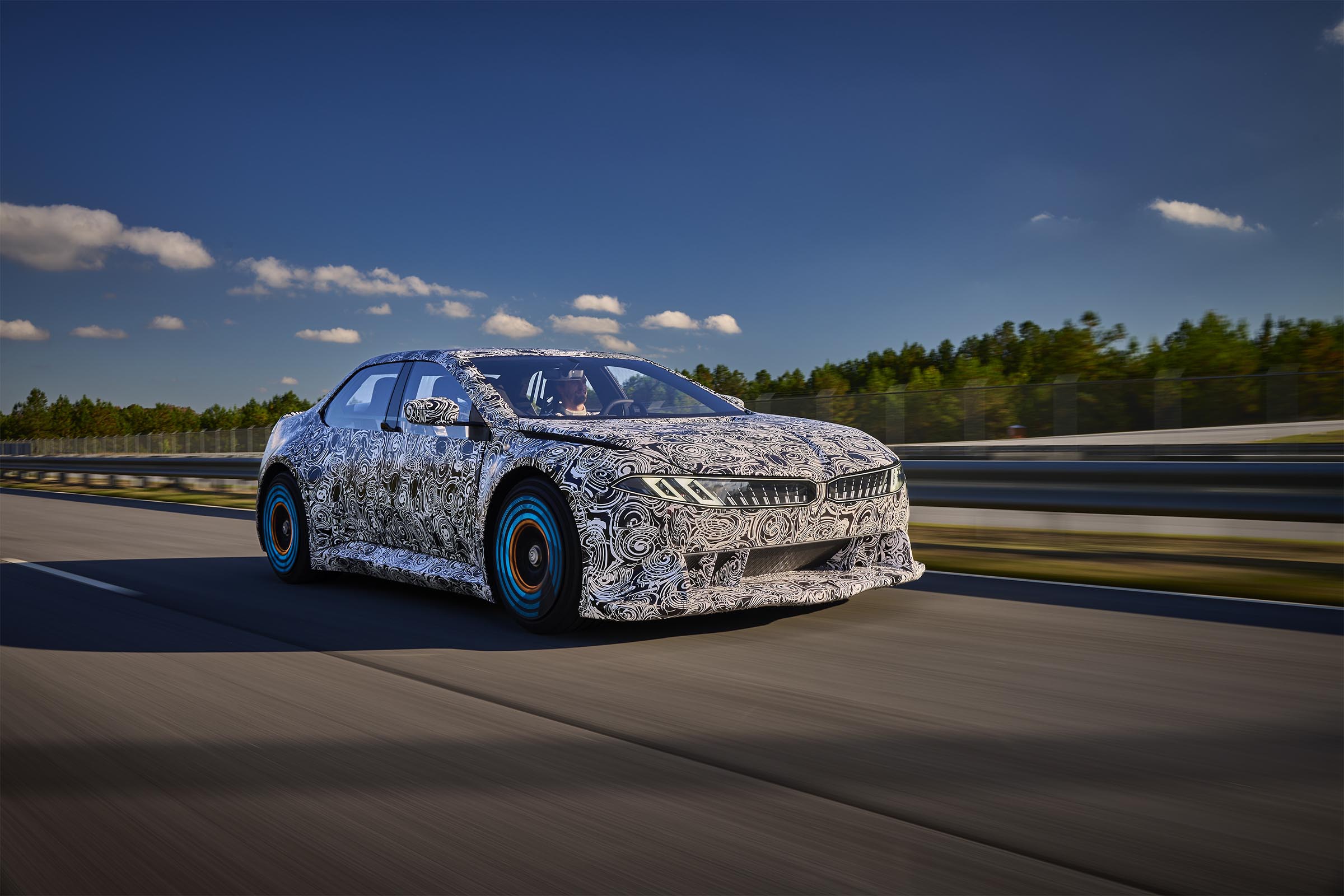
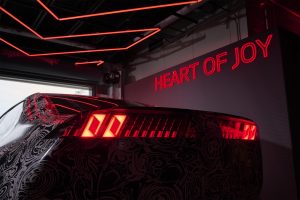
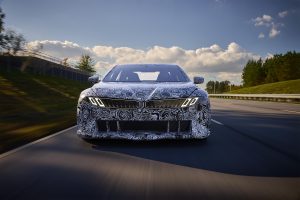
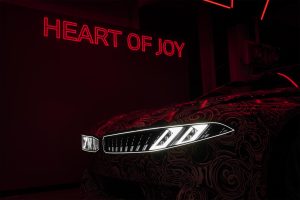
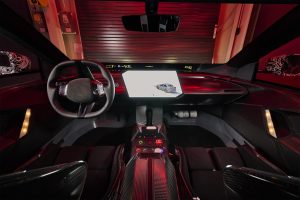
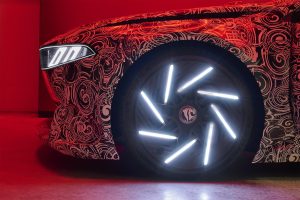

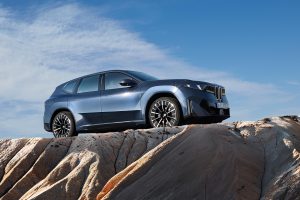

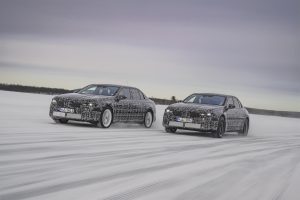

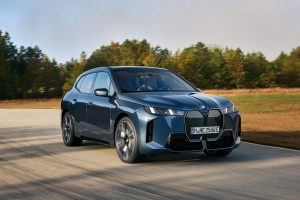
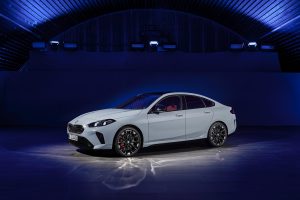
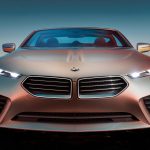
Complexity for the sake of complexity.
Drive from A to B then back to A.
Actually, simplify: Combine dozens of microprocessors into a single (or four) centralized processors. It’s one real advantage of Tesla’s and many of the Chinese.
Paul E.